Cajun Red Beans and Rice is more than just a meal. It’s a celebration of Louisiana’s rich cuisine and a beloved Southern comfort food. This dish, filled with history, brings together smoky andouille, savory beans, and aromatic spices. It’s a hearty dish that has been nourishing families and souls for generations.
This dish is rooted in authentic Cajun recipe traditions. It reflects Louisiana’s vibrant culture. Every spoonful tells a story of Creole innovation and communal cooking. It’s a staple, enjoyed whether it’s Monday dinner or a weekend gathering.
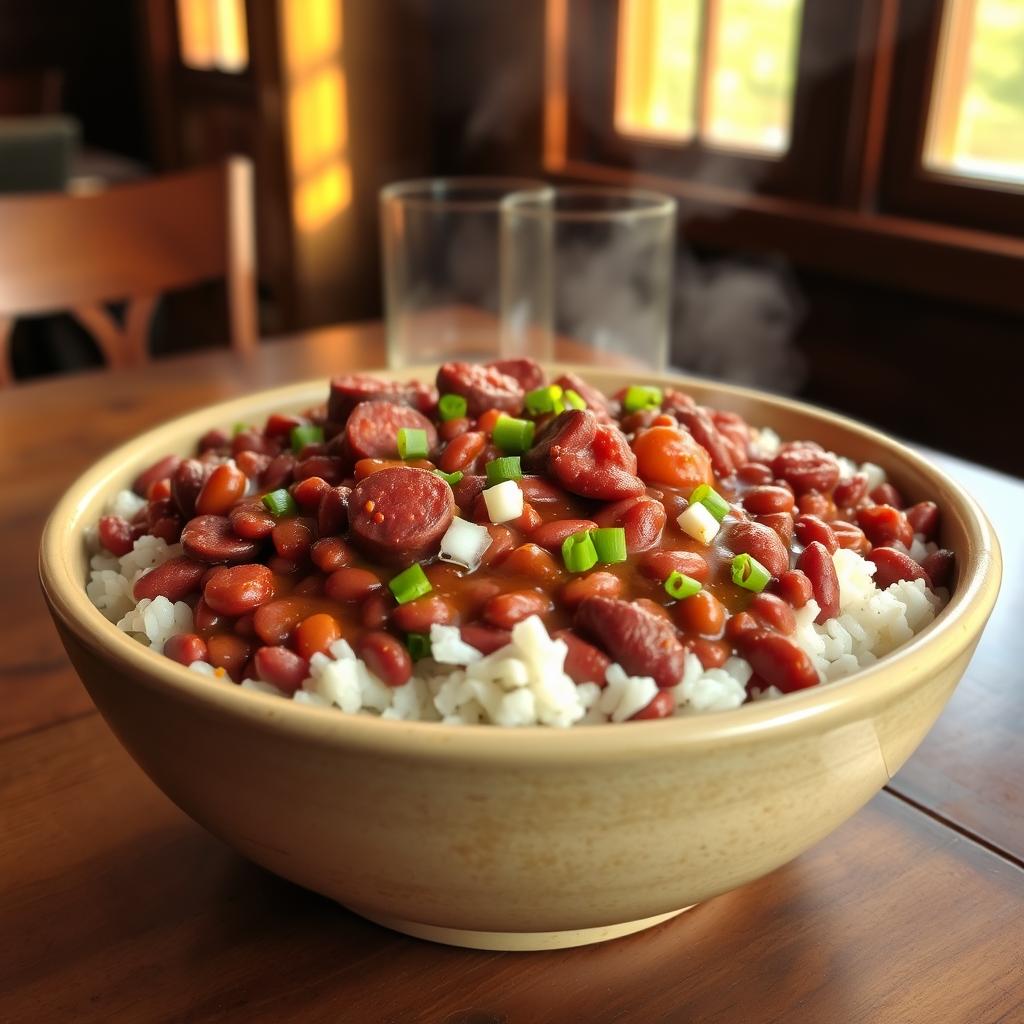
Key Takeaways
- A cornerstone of Louisiana’s culinary identity, blending French, African, and Native influences.
- Known for slow-cooked flavors using the Holy Trinity of onions, bell peppers, and celery.
- Traditionally served on Mondays when laundry day meant slow-cooking was practical.
- Adaptable to modern diets while keeping its authentic roots intact.
- Symbolizes community and comfort in Southern cooking traditions.
The Rich History Behind Cajun Red Beans and Rice
Rooted in Louisiana’s Creole history, red beans and rice shows the state’s cultural mix. This simple dish became a key part of New Orleans cuisine. It combines African, French, Spanish, and Caribbean tastes.
Each ingredient has a story of survival and adaptation. It turned simple items into a symbol of community.
Origins in Louisiana Creole Culture
Early Louisiana food history reveals red beans came from enslaved cooks. They mixed African cooking with local ingredients. The dish’s base—beans, spices, and smoked meats—showed resourcefulness.
Below are key cultural contributions:
| Cultural Influence | Contribution |
|---|---|
| African | Stewing methods and spice blends |
| French | Use of roux and slow-cooking traditions |
| Caribbean | Heat from peppers and bold seasoning |
The Monday Tradition: Laundry Day Meal
In 19th-century New Orleans, Mondays were laundry days. Households needed a dish that could simmer unattended. Red beans were perfect for this.
The Monday tradition red beans became a weekly ritual. It’s celebrated in jazz music and local lore. Today, it’s still a weekly tradition in many families.
Evolution Through Generations
Generations have tweaked recipes, yet core elements remain. Cajun cultural dishes like this show how traditions adapt. Modern chefs experiment with smoked meats or spice blends.
But the dish’s soul stays unchanged.
“Red beans were our comfort food. My grandmother’s pot would feed the whole neighborhood on Mondays.” – Chef Marcelle Bienvenue, New Orleans culinary historian
What Makes Cajun Red Beans and Rice Authentic
Authentic Cajun cooking is all about tradition. The traditional red beans recipe from New Orleans is slow and precise. It’s about simmering beans for hours to get that rich flavor.
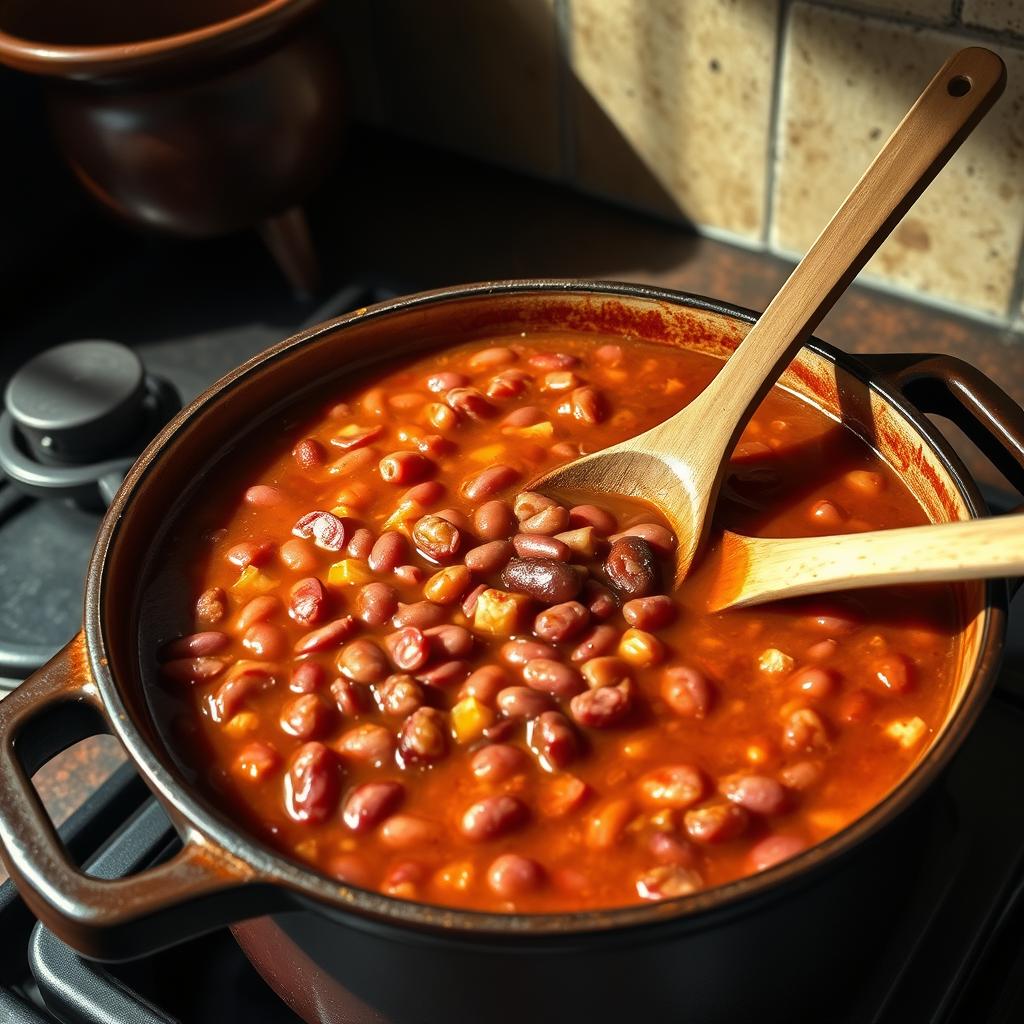
The dish is all about balance. The broth should just coat the rice, not be too thick or too thin. You build flavors slowly, starting with smoked meats and vegetables. The right mix of beans and rice is also key, so each can shine.
- Simmer beans for 2–3 hours on low heat
- Avoid over-stirring to keep beans intact
- Season with file powder or paprika for authentic depth
“Authenticity isn’t about perfection—it’s about respect for the process,” says Chef Marcelle Bienvenu of New Orleans’ Commanderie de Louisiane. “Let ingredients speak for themselves.”
While recipes may vary, the core stays the same. Some add parsley, others don’t. The main thing is to honor Louisiana’s cooking traditions. Whether in a cast-iron pot or slow cooker, the dish’s heart is in its rich flavors and shared history.
Essential Ingredients for Perfect Cajun Red Beans and Rice
Creating this dish starts with top-notch ingredients. Each part, from beans to seasonings, is crucial for that true Cajun flavor.
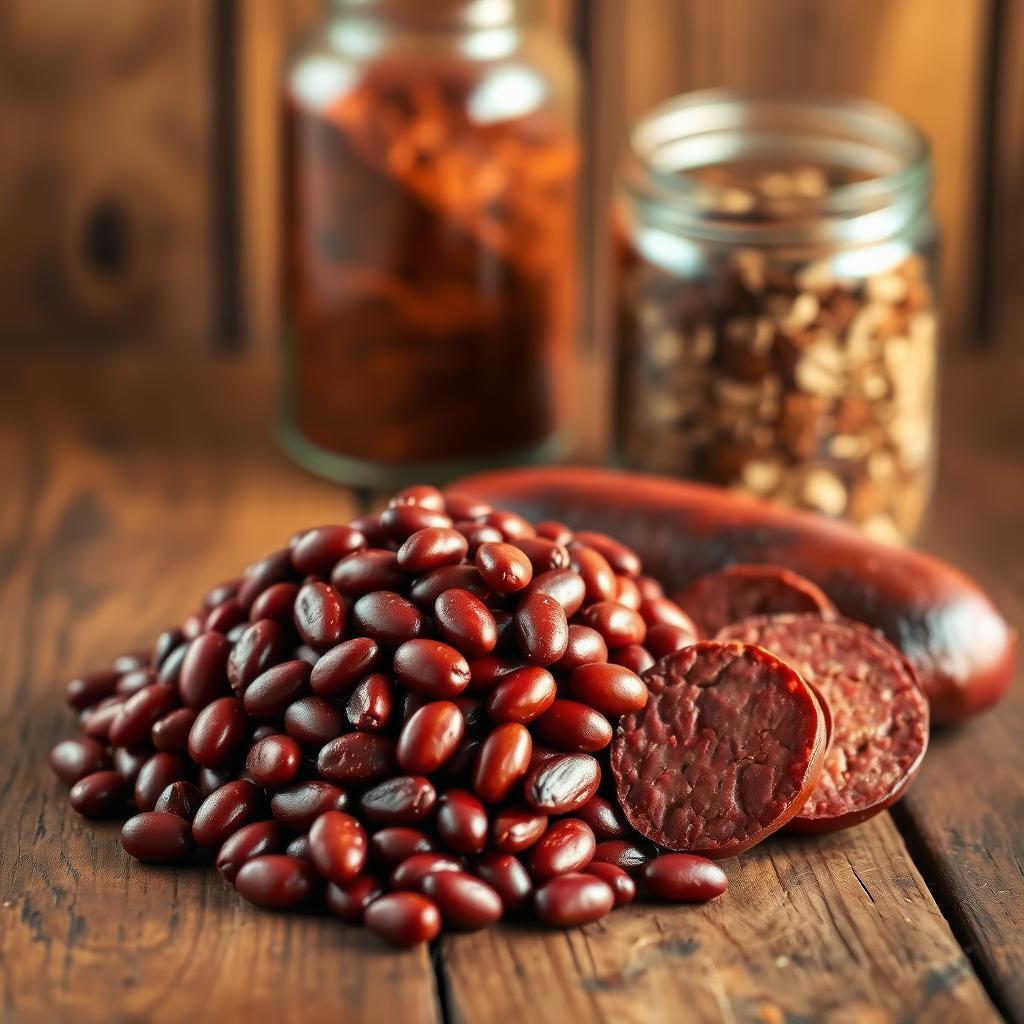
Selecting the Right Beans
Experts prefer Camellia red beans for their texture. Kidney beans for Cajun cooking are good too, but red beans hold up well. First, rinse the beans to remove coatings and cut down on gas.
Meat Components: Andouille, Ham Hocks, and Tasso
- Andouille sausage: Choose smoked types like Andouille by Desi’s for a strong smoky taste.
- Ham hocks: Bone-in cuts add collagen to the broth, making it richer.
- Tasso ham: Thin, smoked pork; use smoked bacon if you can’t find it.
The Holy Trinity of Cajun Cooking
The Cajun trinity is key: onions, bell peppers, and celery. Sauté them until soft to create the dish’s flavor base. Green bell peppers add mild sweetness, while red ones bring more depth.
Herbs and Spices That Define the Dish
A little Cajun seasoning like Tony Chachere’s adds cayenne, thyme, and garlic powder. Bay leaves bring earthy flavors, and paprika helps adjust the heat.
Traditional Preparation Methods

Learning to make this dish begins with picking your method. We’ll cover the steps to turn ingredients into a warm meal.
Soaking vs. No-Soak Methods
Soaking dried beans overnight can cut cooking time in half. For a quicker option, boil them for 5 minutes, then let them rest. No-soak methods also work, but you’ll need to simmer longer. Pro tip: Quick-soaked beans stay firm and save time.
- Overnight soak: 8 hours submerged in cold water
- Quick soak: Boil 2 mins + 1 hour rest
- No-soak: Add directly to pot with extra liquid
Low and Slow Cooking Technique
Simmer beans on a low flame for 1.5-2.5 hours. Dutch oven red beans get deep flavor in heavy pots. Pressure cooker red beans cook in 20 minutes on high pressure. Stir occasionally to prevent sticking.
Creating the Perfect Creamy Texture
Slow cook red beans until they soften and release starch. The best creamy texture comes from balancing cooking time and heat. Some beans will dissolve slightly, thickening the sauce. Others will stay plump. Taste frequently to avoid overcooking.
When the beans are tender and the liquid thickens, they’re ready. A fork should easily pierce each bean.
Step-by-Step Recipe Guide
Learn to make the red beans and rice recipe with ease. It’s perfect for a homemade Cajun dish. This guide makes it simple and authentic.
- Ingredients: 1 lb dried red beans, 1 cup diced onion, 1 cup diced celery, 1 cup diced bell pepper, 2 smoked sausage links, 2 bay leaves, 1 tsp cayenne, 8 cups water, cooked white rice.
- Rinse beans well and remove any debris. Put them in a big pot with water, sausage, onion, celery, bell pepper, and bay leaves.
- Bring to a boil, then lower the heat. Let it simmer, uncovered, for 1.5–2 hours. Stir now and then until the beans are soft.
- Add cayenne and adjust the seasoning. Take out the sausage, slice it, and put it back in the pot before serving.
- Serve over rice, using a bean to rice ratio of 2:1 for the classic taste.
- Enjoy with crusty bread to soak up the broth. This is a key part of the traditional red beans method.
- For a Sunday dinner recipe, prepare the ingredients the night before. This makes cooking easier.
- Check the saltiness as the beans soak up the liquid. Add more broth if it’s too dry.
Try new things with your red beans and rice recipe! Start with this guide, then change spices or meats to make it your own. The best Cajun cooking comes from trying new things in every pot.
The Art of Cooking Perfect Cajun Rice
Perfect fluffy rice is the unsung hero of Cajun red beans and rice. Louisiana rice traditions rely on specific grains to balance the hearty beans. Mastering the basics turns this side dish into a crowd-pleaser.
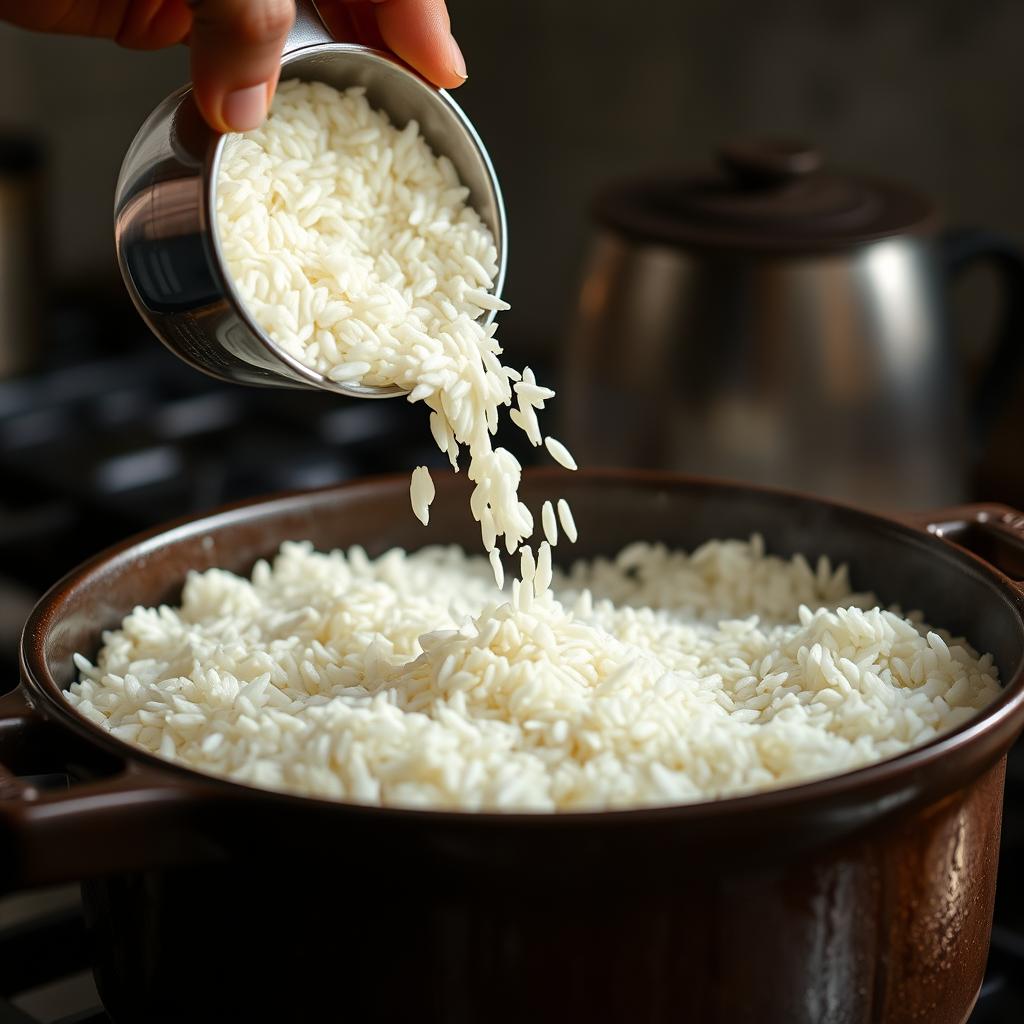
Rice Varieties That Pair Best
Choose between two Louisiana favorites: long grain white rice for light, separate grains or aromatic popcorn rice. Both retain texture when paired with saucy beans. Look for brands like Louisiana Farm Fresh for authentic flavor.
Fluffy Rice Cooking Techniques
- Wash rice gently to remove excess starch
- Use a 2:1 water-to-rice ratio for stovetop cooking
- Cover tightly and simmer on low heat until water is absorbed
Rice cookers automate the process—set to the “white rice” mode for consistent results. Avoid lifting the lid during cooking to prevent steam loss. Overcooking leads to mushy grains, so time it carefully.
Traditionally, Cajun rice is cooked plain, no butter or oil. Taste the difference when using genuine Louisiana rice varieties. A perfectly cooked batch should have grains that stay distinct yet complement the beans’ rich flavors.
Regional Variations Across Louisiana
Louisiana loves red beans and rice, but how it’s made varies by town. From New Orleans to the countryside, each area adds its own twist. This shows the heart of Louisiana regional cooking. Let’s explore how place and tradition shape this beloved dish.
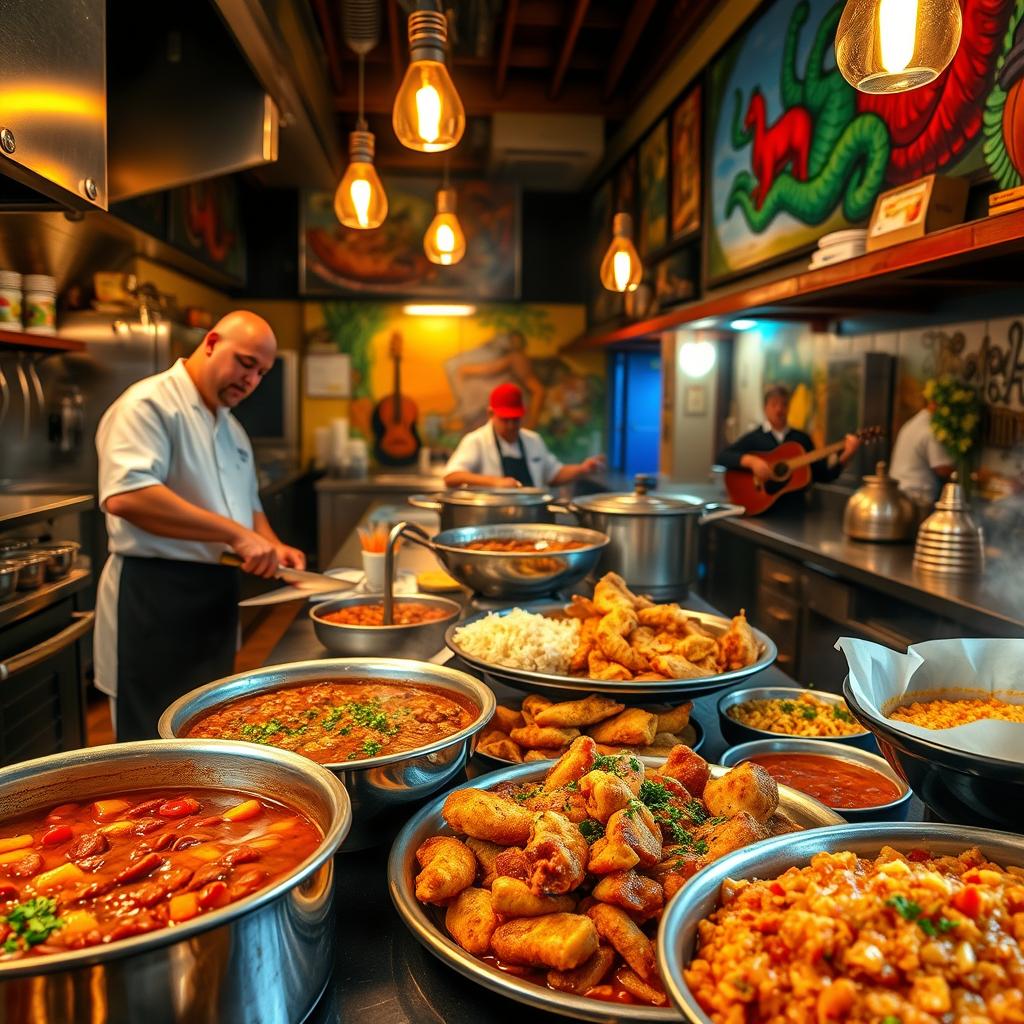
New Orleans Style
New Orleans red beans are known for their rich, smoky taste. The Creole vs Cajun beans debate often focuses on tomatoes and spices. In New Orleans, cooks mix tomatoes and bell peppers into the Creole version. This contrasts with the Cajun style, which focuses more on meat.
This dish is a staple on Mondays, reflecting the city’s lively food culture.
Rural Cajun Interpretations
In rural areas, rural Cajun cooking uses local ingredients. Beans are cooked with squirrel, rabbit, or venison, along with Andouille. These versions are simple, letting the bold flavors of meat and slow-cooked beans shine.
Modern Chef Adaptations
Modern Cajun cuisine blends tradition with new ideas. Chefs are experimenting with:
- Sous vide for tender meats or smoked paprika for depth.
- Global twists like harissa or coconut milk.
- Sustainability-focused ingredients like heirloom grains.
As chef John Besh says,
“In modern Cajun cuisine, tradition is a starting point, not a straightjacket.”
These updates keep the dish exciting without losing its essence.
Healthier Adaptations Without Sacrificing Flavor
Do you love the bold tastes of Cajun food but want lighter options? Learn how to make vegetarian red beans and low sodium Cajun food that still taste great. These changes use bold, healthy ingredients to keep meals full of flavor.
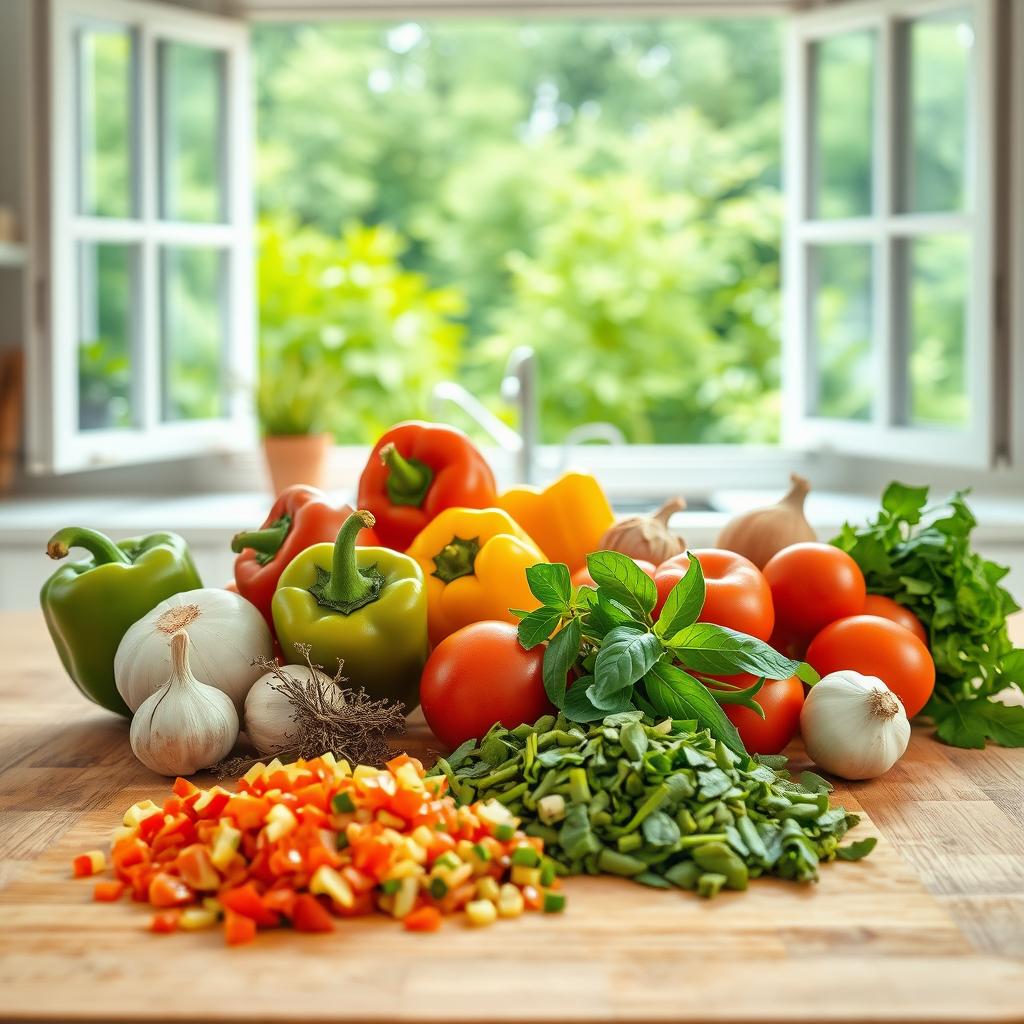
“Good cooking isn’t about restriction—it’s about creativity.” – Chef Marcelle Bienvenu
Begin by swapping meat with plant-based choices like soy-based Andouille or mushrooms. Use reduced fat red beans by cooking in vegetable broth instead of fat. Here’s how:
- Replace 1/2 the meat with diced eggplant or zucchini
- Choose low-sodium broth and season with smoked paprika
- Add fiber-rich lentils to vegetarian red beans for heartiness
| Traditional | Healthy Swap |
|---|---|
| Ham hock | Vegetarian bullion + liquid smoke |
| White rice | Barley or wild rice blend |
| Regular sausage | Lightly smoked tempeh slices |
Pair healthy Cajun cooking with fresh herbs like thyme and parsley. This boosts umami flavors. Even small changes, like roasting onions and peppers before adding beans, enhance taste. These tweaks honor Cajun traditions while fitting today’s health goals.
Serving Suggestions and Accompaniments
Turn red beans and rice into a feast with these trusted additions. Pair it with cornbread with red beans or collard greens for a balanced flavor. Discover how to create a meal that honors tradition while feeling new.
Traditional Side Dishes
- Enjoy warm cornbread with red beans alongside for a classic mix.
- Add Southern side dishes like fried okra or coleslaw for a crisp contrast.
- Try black-eyed peas or field peas for a protein-rich addition.
Beverage Pairings
Pair the meal with:
- Louisiana beer pairings like Abita Turbo Dog or Natchitoches Lager for a refreshing taste.
- Sweet tea or lemonade for a non-alcoholic choice.
Include hot sauce pairings like Crystal or Louisiana brand for personal spice.
Presentation Tips for Home Cooks
Follow these tips for a restaurant-style spread:
- Serve beans in a cast-iron pot for a rustic Cajun meal presentation.
- Garnish with fresh parsley and a sprinkle of green onions.
- Arrange sides in small bowls around the main dish.
Let guests customize their portions—this dish is best when shared!
Make-Ahead Tips and Storage Advice
Batch cooking beans is a tradition that fits well with today’s meal prep Cajun food needs. Here are some tips to make it easier:
- Keep cooked beans in airtight containers. They last up to 4 days in the fridge or 3 months in the freezer.
- Mark containers with the date and freeze in single portions. This makes reheating red beans easier later.
Bring leftovers back to life by simmering them with some broth. For leftover red beans recipes, try these ideas:
- Mash beans into patties and fry them for crispy fritters.
- Fill bell peppers with rice, cheese, and beans.
- Combine beans with yogurt for a spicy dip.
| Method | Storage Time | Best Use |
|---|---|---|
| Freezing | 3 months | Batch cooking beans for future meals |
| Refrigeration | 4 days | Quick weekday dinners |
Experts say to portion beans into family sizes for easy reheating. This follows Louisiana’s old way of cooking big batches for family meals. Always let dishes cool down before freezing to keep their texture.
Conclusion
Red beans and rice is more than just a meal. It connects us to Louisiana’s rich food culture. Every bite tells a story of Southern cooking passed down through generations.
By learning Cajun cooking, like slow simmering, we can make this dish just like it’s from Louisiana. You can use a ham hock or try new things. But the heart of the dish stays the same, tied to family and tradition.
Let’s make homemade Cajun classics our own. Try new seasonings, meats, or sides. But remember, the core of the dish is the smoky Andouille, the rich flavors, and the joy of sharing.
Share your changes online or at family gatherings. This dish grows stronger when we work together.
Getting red beans and rice right takes time and effort. Each batch teaches us something new. Keep notes, ask for advice, and let your kitchen be a place where Louisiana’s food stories come alive.
Remember, every great recipe starts with a simple pot on the stove. It’s ready to inspire the next generation.
FAQ
What type of beans are best for Cajun red beans and rice?
Camellia brand red kidney beans are the top pick for authentic Cajun red beans and rice. They offer a rich flavor and creamy texture. Pinto beans can also be used, but they won’t match the kidney beans’ texture.
Can I make Cajun red beans and rice vegetarian or vegan?
Yes, you can! Use plant-based sausages or smoked paprika for a smoky taste. Vegetable broth instead of chicken broth makes it even better.
How long should I cook red beans to achieve the right texture?
Cooking time varies, but 1.5 to 2 hours is usually right. This lets the beans soften and get creamy. Keep the heat low and stir now and then.
What makes the ‘holy trinity’ so important in Cajun cooking?
The ‘holy trinity’ is onions, bell peppers, and celery. They’re the base for many Cajun dishes. They add depth and flavor, making the dish unique.
What are some traditional side dishes to serve with Cajun red beans and rice?
Cornbread, collard greens, and fried okra are classic sides. They enhance the dish’s flavors. Hot sauce or pickled vegetables add an extra kick!
How can I store leftovers of Cajun red beans and rice?
Store leftovers in the fridge for up to 4 days or freeze for 3 months. Use airtight containers to keep the flavors and texture.
What kind of rice should I serve with Cajun red beans?
Long-grain white rice or Louisiana popcorn rice are best. They soak up the bean flavors and stay fluffy.
What is the best way to reheat Cajun red beans and rice?
Reheat gently on the stove over low heat. Add water or broth if needed to keep it creamy. Stir often to avoid sticking.
